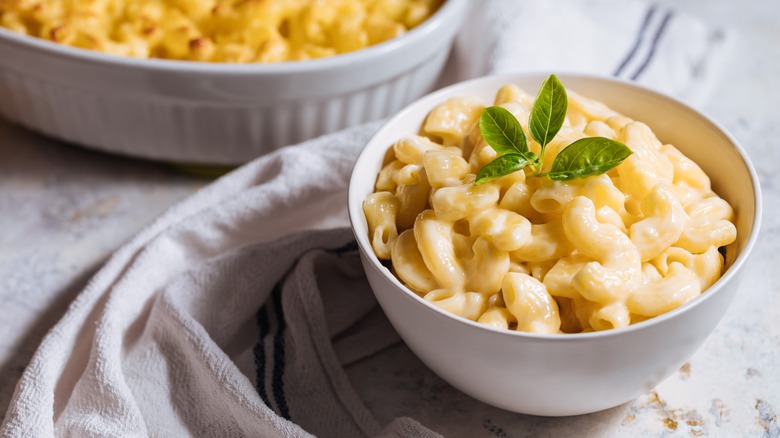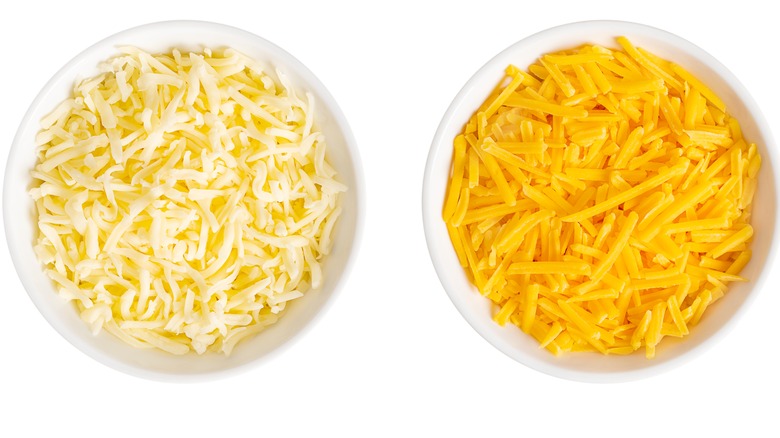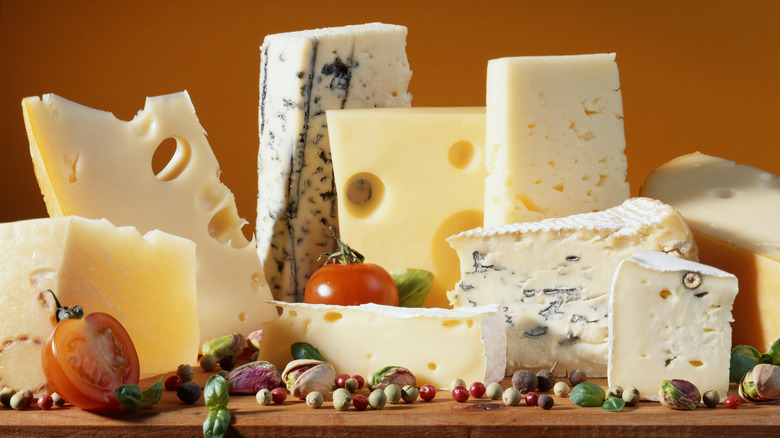That Leftover Cheese In Your Fridge Is Exactly What Your Mac And Cheese Needs
If it's the holiday season, you're probably staring at a fridge full of leftovers. Instead of looking at all those half-used cheeses as the useless remainders of a few good recipes, look at them instead as an opportunity to make an absolutely dynamite dish. Because most, if not all, the cheese in your refrigerator can be combined to make an unforgettable variation of your favorite baked macaroni and cheese recipe; all you need to know are the rules of the road. Heck, you don't even have to bother making (an actually tasty) béchamel sauce base. Once you've got the mac, it's all about the cheese.
The principle of making a good mac and cheese isn't any different than baking the best apple pie: both benefit from diversity. In the same way an apple pie is best when filled with a variety of sweet and sour apples, mac and cheese gets positively sublime when filled with a blend of sharp, earthy, and melty cheeses. As you're raiding your fridge, think of each cheese you grab as having its own important flavor and textural role, complementary to the whole dish.
Sharpness is good; meltiness a must
Your macaroni and cheese workhorse is going to be some form of cheddar. A good, sharp cheddar will add definition to a dish that is otherwise elbow pasta and milk. (A cheese's sharpness – that feeling in the back of your jaw when you take a bite — is because of calcium lactate crystals, which form as the cheese ages.) There are a variety of cheddar cheeses of various levels of sharpness; that part is entirely subject to personal taste.
The second important mac and cheese ingredient consideration is the meltiness of the cheese. Got some mozzarella in the fridge? You know what to do. (It doesn't matter if it's the expensive or pre-grated version; mozz may be mild in taste but it's long on gooey. Pursuant to that, nutty Gruyère melts like a champ, as do provolone and fontina. Oh, and don't forget that "pasteurized process cheese food" we know as American cheese, the soul of melt. This will hold the pasta together in lieu of a béchamel.
It's time to play the wild cards
Lastly, look to add some flavorful oddballs. A snappy Parmesan grated into the saucepan will work wonders. Perhaps you've got some smoked Gouda slices, bought for leftover turkey sandwiches – use 'em! Same goes for sharp Roquefort, creamy brie, any iteration of Monterey Jack, or even crumbly Welsh Caerphilly. There's room for some of all of these cheeses, as long as they're considered flavorful supporting actors to the cheddar-y, melty stars.
Ultimately, your goal has more to do with texture than flavor. Unless you're a collector of weirdly flavorless cheeses, you'll have little trouble making your macaroni and cheese taste good. What it must be is creamy and gooey. One key to achieving this result is to go ham on the cheese: a 2:1 ratio of cheese to pasta is a good rule of thumb. So, check the recesses of your fridge to begin this incredibly fun — and perfectly indulgent — adventure.


